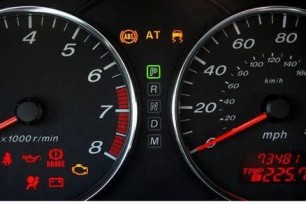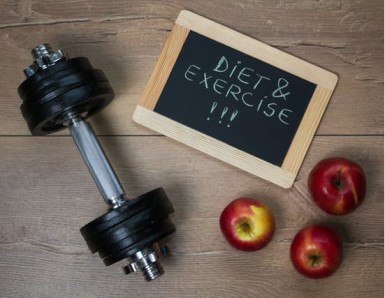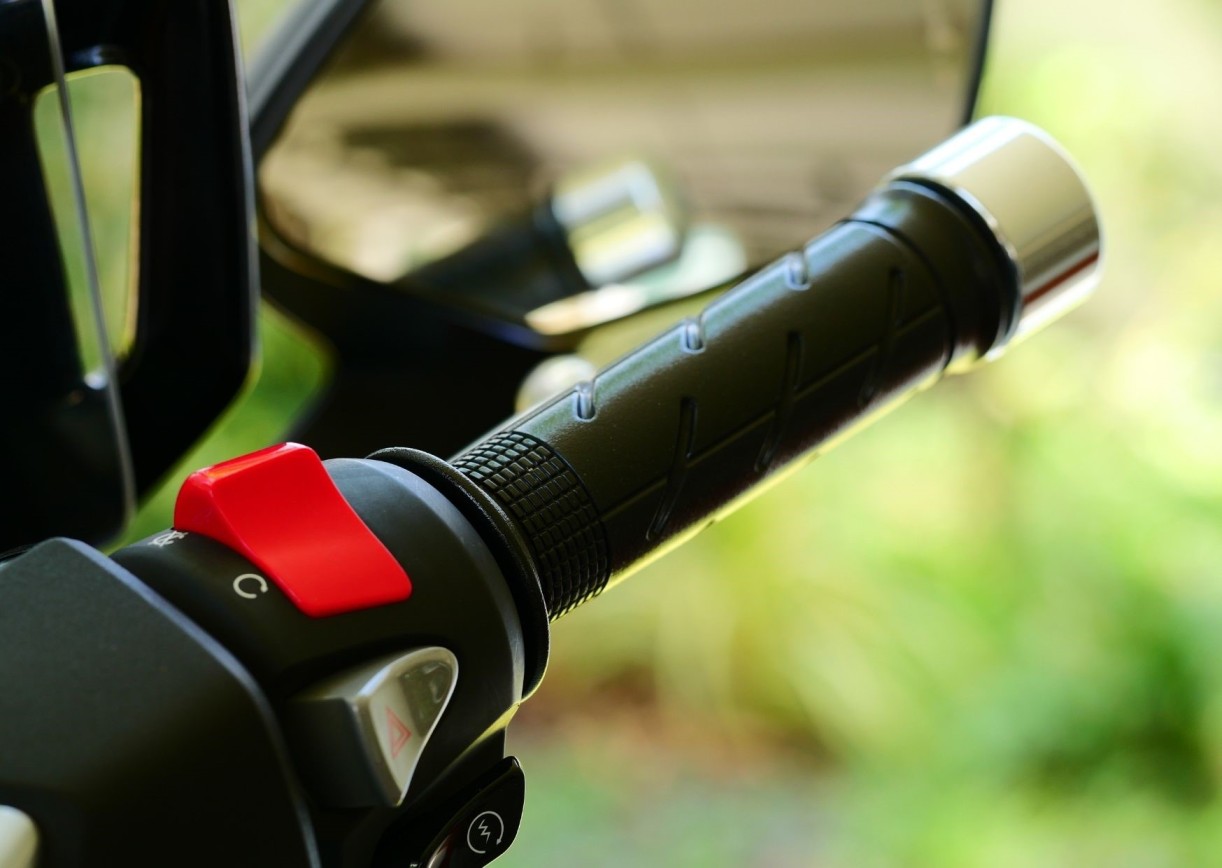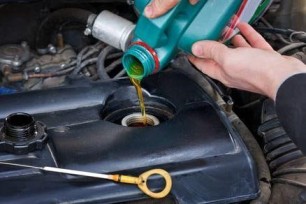General Insurance Blogs, Articles & Updates by - Magma HDI
Have us call you
- RENEW YOUR POLICY
- BUY NEW POLICY

Five car dashboard warnings that you shouldn't neglect
Your vehicle’s dashboard is usually something you don't give much attention to. That's because, unless something goes wrong, it often appears the same every time you drive. Cars have thousands of moving components comprising dozens of linked systems powered by cutting-edge technology and sensors. With that much computing power on board, if any error occurs, your car will undoubtedly alert you about them.
All the warning indicators in your car are explained in detail in your car's user manual, but reading through it may seem like a chore to many. However, the warning lights are there for a reason, and knowing what they represent can prove to be the difference between a good trip and a breakdown.
Here are five warnings that appear on all vehicle dashboards that you should never ignore.
1. Engine warning indicator:
This indicator means there might be a problem with your engine's primary systems. This problem might be as minor as a faulty sensor or a damaged spark plug or as severe as a damaged fuel pump. This indicator blinks for a few seconds when you start your vehicle. If the indicator remains on or blinks continuously, it indicates a serious problem.
2. Oil pressure indicator:
This indicator means that your engine's oil pressure is low. This might also mean that you're keeping low on engine oil. If this light comes on, turn off your ignition right away. Oil's shortage can cause irreversible engine damage. Check the oil level once you've parked safely on level ground. Fill it up if it's below the required mark. If the oil level is adequate, this might indicate a problem with the oil pump.
3. Brake warning indicator:
This indicator shows that you have left the handbrake on. Still, if it continues to flash even after you release the handbrake, it might indicate a problem associated with the braking system. See a mechanic right away.
4. Battery indicator:
It signifies that the alternator responsible for charging your car battery is malfunctioning and cannot provide an adequate charge. As the cells degrade with time, it might also be an issue with the battery. With the alternator and battery functioning poorly, you should minimize its load by turning off systems like AC and LEDs. Find a mechanic at the earliest because there may come a time when your vehicle won't start at all.
5. Engine temperature indicator:
The indicator typically signifies either your engine is overheating, or your coolant level is low and needs refilling. When this indicator flashes, it’s best that you immediately come to a halt and allow your engine to cool down. Check your coolant level and search for any leaks once the car engine has cooled. If the coolant level is correct, this indicator trigger might be a sign of a more severe issue, such as a damaged water pump.
An overheated engine can distort, causing parts to fail. Avoid driving further and tow your vehicle to the mechanic to avoid further damage to your car’s engine. Your car insurance features like roadside assistance will help you get complete service in case of any mishap in the middle of the road. You can enjoy the benefits of car insurance coverage without spending money from your side.
While these indicators signal that something needs attention, there is typically no reason to be alarmed. Most warning indicators will not leave you stuck, so you can generally safely drive yourself to a service station. Remember that these indicators change across automobile manufacturers and even within the same manufacturer's models. It is best to check with your mechanic if something worrisome flashes on your vehicle dashboard before it gets you in trouble.
Click HERE to know more about different car insurance plans suited for your car.
Disclaimer: The information provided above is for illustrative purposes only. To get more details, please refer to policy wordings and prospectus before purchasing a policy.

Six benefits of exercise and good eating habits
In today’s pandemic time, wellbeing and health have become more important than ever before in our life. People have started giving serious attention to personal health like their career, entertainment and other things. Change in day-to-day habits, increase in pollution, and several other factors severely impact an individual’s health. It may lead to multiple health diseases and medical problems.
Medical bills for such diseases are high, and to protect yourself and your family from this burden, one must invest in a good health insurance plan. You can check for online health insurance policies of various companies by comparing their schemes and payable premiums.
Apart from a good health insurance plan, a regular workout and a proper diet are essential to maintain a healthy lifestyle. Following are some of the many benefits of exercising and keeping a balanced diet.
1. Prevention of disease:
Regular exercise and proper diet can prevent heart disease, high cholesterol, diabetes, high blood pressure, arthritis, and several types of cancer. Appropriate workout regimes and diet can boost your immune system to fight against all kinds of diseases.
2. Boost your mood and energy:
Diet and workouts have a significant impact on your mood. A chemical called endorphins is released due to certain exercise forms, which helps make you feel positive. A good mood and positive energy can make your day more productive at work. It also helps you to remain mentally fit.
3. Brain health and memory:
Various nuts and fruits included in your diet can help you sharpen your brain memory. Even meditation benefits you to concentrate on things quickly. The studies prove the benefits of physical exercise, especially aerobic exercise, with positive effects on brain activation on multiple fronts.
4. Relaxation and sleep:
Many of us might be concerned about our sleeping habits. A proper workout helps you to get a sound sleep. But, on the other hand, a heavy meal can turn your night into a restless one. So, both things should be in proportion, and these restless nights can turn into rich ones.
5. Help in weight loss:
Improper diet and workouts can lead to obesity, which can cause many cardiac diseases. Cardio exercises like aerobics, running, cycling, walking can help you to reduce your obesity level. Fewer intakes of calories in your diet will help your metabolism work fast and digest your food soon. Lower the fat content in your body and lessen the chances of getting ill.
6. Good for muscles and bones:
Physical activities like weight lifting and a proper amount of protein can help you build your muscles. It also helps to grow the strength of your bones and their density. Have an adequate amount of nutrition in your meal, and you'll surely see the outcome in future.
Apart from diet and proper exercise, you should have a full-body check-up once a year. An early diagnosis can help you to recover from various diseases and helps increase your lifespan. Various online health insurance companies provide complimentary full-body check-ups of the client once a year post renewal.
Your entire lifestyle wagon wheel relies on these crucial aspects, so plan your roadmap to health and fitness thoughtfully. Any negligence in this can land you up into severe trouble.
LOOKING FOR THE BEST HEALTH INSURANCE PLAN FOR YOU? CLICK HERE TO KNOW MORE…

How to sell your bike at a good resale value
Your bike reminds you of road trips with friends and many other memories. But after a few years of use, there comes a time when you realize that you don't really need it now. Either you've outgrown your bike, upgrading to a four-wheeler or for any other reason, you have decided to sell your bike.
At this time, you want a good resale value for your bike and the key to a good resale value is finding a genuine buyer who can pay the highest price for it. But, before that, there is a crucial step of valuation to determine the offer you expect to get.
Read ahead to know what you should keep in mind while selling your two-wheeler at a high resale value.
Valuation: Numerous factors influence the value of a used vehicle. Several websites and tools are available online to calculate and provide you with an approximate resale price for your vehicle. You may also go to your local garage and ask for their opinion on the matter.
A few of the primary deciding factors are age, model, kilometre run, insurance record, ownership (whether it's first-hand or second-hand), overall condition of the vehicle, and engine. Always remember that getting a good value for your bike depends on the bike's physical condition and your negotiation skills.
Documentation check: To get the best valuation of your bike, ensure all the documents like the registration certificate and bike insurance policy are with you. The documents transfer process should be conducted in the new owner's name as soon as the payment is made.
Along with the RC and Bike Insurance Policy, the other required documents are Road Tax Certificate, Form 28 – Application, Grant of No Objection Certificate, Form 29 – Notice of Transfer of Ownership of a Motor Vehicle, and Form 30 – Application for Intimation and Transfer of Ownership of a Motor Vehicle.
You may visit your nearest RTO office for further details on the matter. You'll be given instructions to send certain documents and forms to the authorities, thus intimating them about the change in ownership and sale of your two-wheeler. You shall receive an acknowledgement providing that you submit the authentic documents.
Timely transfer of the mandatory third-party liability is essential. If the sold bike is involved in any accident and the insurance is not transferred, the original owner is held liable.
Finding a buyer: The most important thing for a good value is finding a buyer who is willing to pay you a good amount for your two-wheeler. There are two good options you can choose from to find the perfect buyer:
1. Local garages – It is an old-fashioned way of reselling goods, still one of the quickest to avail cash. The advantage of selling your bike at a local garage is that the finalization of the deal is often done the day you walk in. It is generally preferred to sell a thing locally to avoid processing fees.
2. Online Markets – It's becoming another popular and easy way to sell your old bike. There are multiple websites like OLX and eBay wherein you can upload a few pictures plus provide an in-depth description of your vehicle, and the interested buyers contact you.
Always be patient and wait for a few good offers while selling your bike. You might have to deal with a rookie with no knowledge, like a first-time buyer or an expert in the field who regularly deals with such negotiations. The key here is your negotiation skills. So be confident about your vehicle and your valuation, and you will surely find a good deal.

Eight signs that indicate an oil change for your car
Lubricating the car is essential to ensure your vehicle's overall fitness and functionality. The regular oil change is relatively an affordable maintenance task your vehicle requires, but the more important question is: How often should you change your engine oil? This entirely depends on the car’s usage. As a driver, you must look for typical signs your vehicle displays when it needs an oil change. You must detect the hints in advance to prevent them from developing severe damages.
This article will explain the top eight signs to heed that indicate an immediate oil change for your car.
• Check the oil change light. The engine sign will turn on if there isn’t enough oil in the engine. So, check the tank to discover what’s going on when the engine sign flashes.
• Engine knocking and noises. The oil acts as a friction barrier between engine components, preventing them from brushing and keeping the engine running silently. The engine noise will get intensified if the oil isn’t working perfectly.
• Change in the colour of the oil. The oil becomes darker and loaded with particles gathered from the engine as it gets utilized. Check your engine oil at least once every month by removing the dipstick from the oil tank. Make sure to wipe it clean before replacing it.
• Smoke from the exhaust. Your car’s exhaust always emits clear gas. But, if you observe smoke coming out from the exhaust, it’s time for a thorough engine inspection. It’s possible that you have a defective engine part or probably an oil leak.
• The odour of oil around the car. When you smell oil inside your vehicle, it’s usually a symptom of an oil leak. The car may overheat if you smell gasoline or vapours. In that case, you should schedule servicing right away after experiencing this.
• Excessive Travel. Consider an oil change quicker than the standard interval if you drive excessively. For example, you should change the oil every 10,000 km or half a year in new cars. For older cars, consider using high-mileage oil and change that every 5,000 Km.
• Fuel efficiency is poor. You would observe a decrease in fuel economy. However, this might indicate other issues with the fuel system, engine, or exhaust system. But an engine may fail to function if it isn’t getting adequately clean oil.
• The engine keeps stopping. If your car has been experiencing repeated engine difficulties, you should examine it. If your car stalls or feels like the engine seizes up at times, you might have low engine oil, poor oil, or an oil leak.
Only knowing how to drive a car isn’t enough; maintaining it is just as necessary. As with every other machine, your car won’t perform the best if not taken care of regularly. If you don’t change your car’s oil regularly, its performance can degrade quickly, resulting in catastrophic damage to your vehicle.
To avoid the consequences, you must watch out for indications that lead you to the warnings of an oil change. Like oil, your car insurance is another thing that needs continual renewal. Car insurances are financial saviours and are required when they are about to expire. Do not forget to check out your car insurance renewal dates and keep them updated to enjoy the uninterrupted benefits of the existing policy.
For your car insurance renewal, click HERE .
Disclaimer: The information provided above is for illustrative purposes only. To get more details, please refer to policy wordings and prospectus before purchasing a policy.


